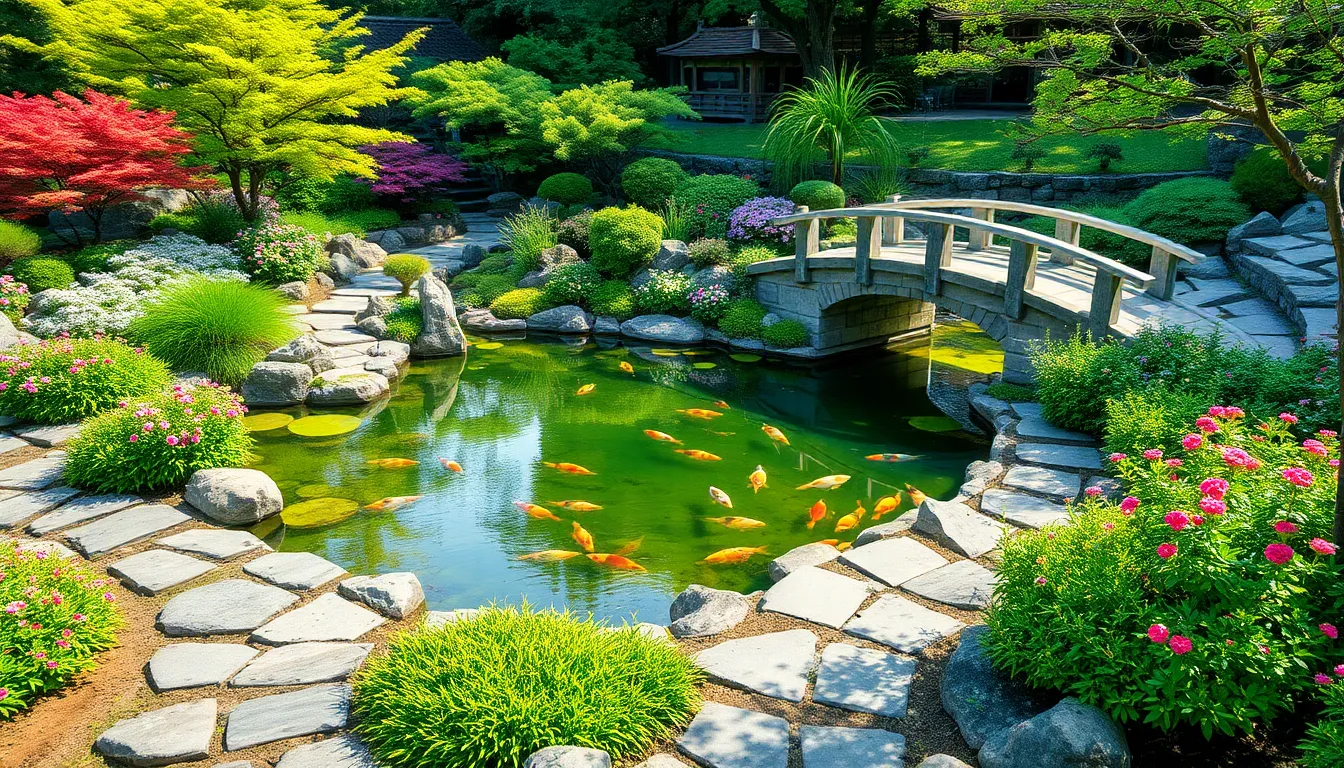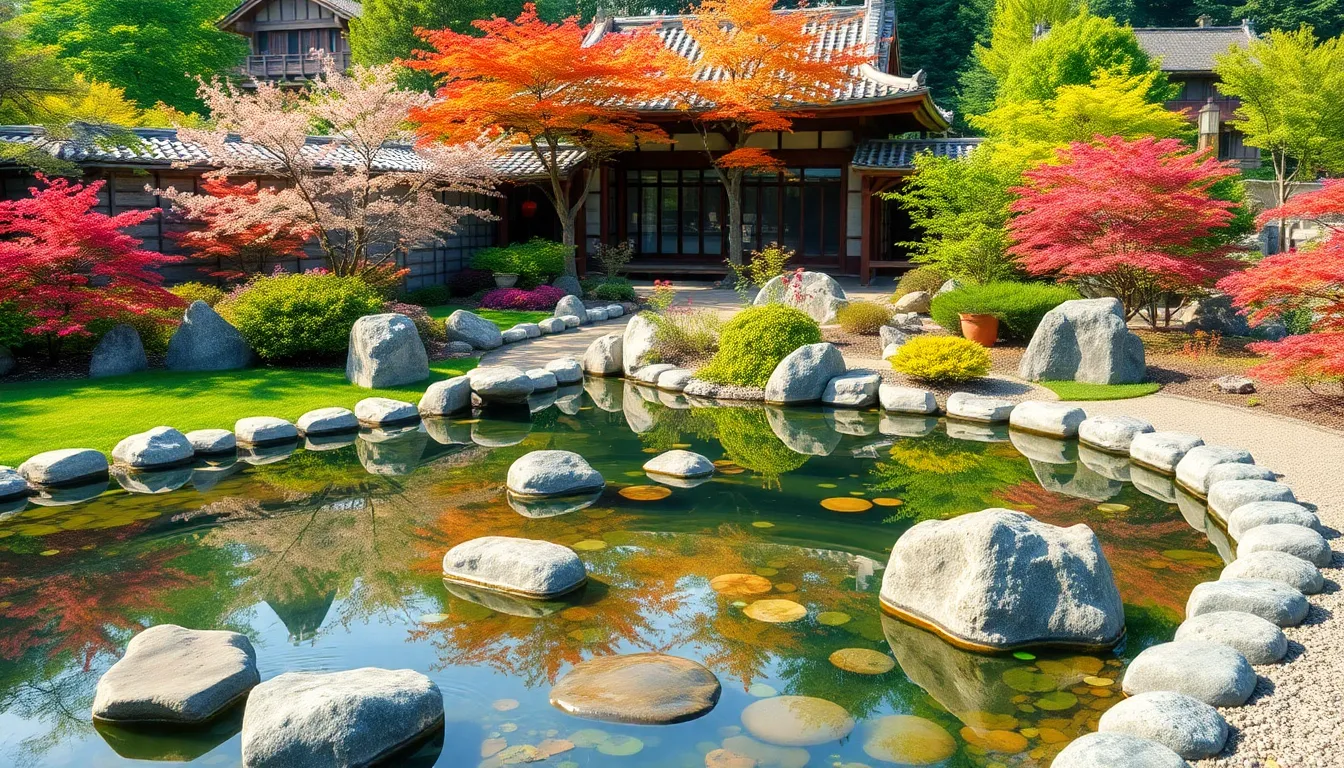The Best Fluffy Pancakes recipe you will fall in love with. Full of tips and tricks to help you make the best pancakes.

Miyazaki Japanese Garden: Discover Japan’s Serene Escape Filled with Beauty and Culture
Nestled in the heart of tranquility, the Miyazaki Japanese Garden offers a slice of Japan that’s just a hop, skip, and a jump away. Imagine strolling through lush greenery, vibrant koi ponds, and meticulously raked gravel that could rival even the best zen masters. It’s the perfect escape for anyone looking to trade their daily grind for a little peace and serenity, or just to snap that Instagram-worthy shot.
Miyazaki Japanese Garden
Miyazaki Japanese Garden serves as a peaceful retreat that embodies traditional Japanese landscape design. This garden features meticulously arranged plants and water elements, creating an atmosphere of tranquility. Visitors often admire the harmonious interplay between koi ponds, stone pathways, and seasonal blooms.
Displays of vibrant flowers provide color throughout the year, enhancing the garden’s beauty in every season. The paths, designed for exploration, encourage leisurely strolls while immersing oneself in nature. Serenity fills the air, making it an ideal location for introspection or photography.
Special attention goes to design elements typical of Japanese aesthetics, such as simplicity and balance. Natural materials like bamboo and stone harmonize with the lush greenery, creating inviting spaces. Visitors appreciate the garden not just for its visual appeal but also for the calming experience it provides.
Events hosted in this garden enhance the experience even further. Cultural exhibitions, seasonal festivals, and tea ceremonies offer glimpses into Japanese traditions. These activities draw people from diverse backgrounds, fostering a sense of community.
Facilities present at the garden ensure comfort for all guests. Benches are strategically placed for resting while soaking in the scenery. Restroom facilities and informational signage contribute to a visitor-friendly environment, encouraging longer stays.
History and Significance

The Miyazaki Japanese Garden reflects rich cultural and historical traditions that span centuries. Each aspect of this garden tells a story, emphasizing the deep connection between nature and Japanese culture.
Cultural Influences
Influences of Japanese philosophy permeate the garden. These philosophies emphasize harmony with nature and tranquility. Buddhism plays a crucial role, evident in the serene water features and the arrangement of plants. Shinto traditions also inspire the garden’s design, highlighting the importance of natural elements as sacred. Seasonal festivals and tea ceremonies enhance cultural appreciation, inviting visitors to experience authentic traditions. Events foster a sense of community that brings diverse groups together. Engaging with Japanese culture allows visitors to deepen their understanding while enjoying the tranquility of the space.
Design Elements
Design elements of the Miyazaki Japanese Garden showcase meticulous artistry. Natural materials such as bamboo, stone, and wood create an authentic Japanese landscape. Thoughtfully arranged plants and water features provide balance and tranquility. Curved paths wind through the garden, enticing visitors to explore and reflect. Seasonal blooms add vibrant colors and texture, enhancing visual interest throughout the year. Attention to detail, such as carefully raked gravel and strategically placed stones, underscores the garden’s commitment to aesthetics. Each design choice contributes to an immersive experience that captivates the senses.
Features of Miyazaki Japanese Garden
Miyazaki Japanese Garden showcases various stunning elements that enhance its aesthetic and cultural appeal. Visitors experience a harmonious blend of nature and design throughout the garden.
Plant Life and Landscaping
Diverse plant life thrives within the garden, featuring traditional species like cherry blossoms, maple trees, and azaleas. Each seasonal bloom brings unique colors and fragrances, inviting admiration from all who stroll through. Landscaping emphasizes natural aesthetics, with carefully arranged plants that create visually appealing vistas. Seasonal changes reveal a remarkable transformation of the landscape, maintaining interest year-round. Additionally, native flora provides a habitat for local wildlife, enriching the garden’s natural ecosystem.
Water Features and Bridges
Koi ponds serve as central attractions, showcasing vibrant koi fish that glide through crystal-clear waters. Water features create soothing sounds of flowing water, contributing to the overall tranquility of the space. Stone bridges arch across ponds, promoting both functionality and beauty while connecting various areas within the garden. These elements not only enhance the visual landscape but also symbolize the journey through nature. The interplay of water and reflections invites visitors to pause and appreciate the serene ambiance.
Paths and Walkways
Winding pathways guide visitors through the garden, encouraging exploration and contemplation. Stone paths, lined with vibrant foliage, create an inviting atmosphere for leisurely strolls. Each turn reveals new perspectives and hidden corners, inviting discovery. Walkways integrate seamlessly with the landscape, crafted from natural materials that retain the garden’s authenticity. Informational signage along the routes enhances visitor engagement, offering insights into the garden’s principles and plant life. The overall design encourages extended visits through its immersive environment.
Visiting the Miyazaki Japanese Garden
Visiting the Miyazaki Japanese Garden promises a rejuvenating experience surrounded by natural beauty. Guests can immerse themselves in the peaceful surroundings while enjoying unique cultural events.
Hours and Admission
Operating hours typically span from 9 AM to 5 PM, providing ample time for exploration. Admission fees vary, with adults paying $10 and children under 12 entering free. Special discounts may be available for seniors and students, fostering accessibility for all. Group rates could also apply, promoting community visits. During seasonal festivals, expect slight variations in hours, with extended times for certain events, enhancing visitor engagement.
Tips for Visitors
Wearing comfortable shoes benefits those who wish to stroll along pathways without discomfort. Visiting during weekdays often results in fewer crowds, ensuring a tranquil atmosphere. Photography is encouraged; bringing a camera captures the garden’s vibrant colors and serene moments. Finding a quiet spot on a bench offers the chance for reflection amidst the beauty. Engaging with informational signage enriches awareness of Japanese culture and garden features. Lastly, checking the calendar for special events could enhance the overall visit, providing unique experiences beyond daily beauty.
Conclusion
The Miyazaki Japanese Garden stands as a testament to the beauty of nature and the depth of Japanese culture. Its serene landscapes and thoughtfully designed features create a space for reflection and relaxation. Visitors leave with a sense of connection to both the environment and the rich traditions that inspire the garden’s design.
Whether it’s the vibrant koi ponds or the seasonal blooms, each element invites exploration and appreciation. Engaging with this tranquil retreat offers not just a visual feast but also a deeper understanding of Japanese aesthetics and philosophy. The garden truly embodies a harmonious blend of nature and culture, making it a must-visit destination for anyone seeking peace and inspiration.
